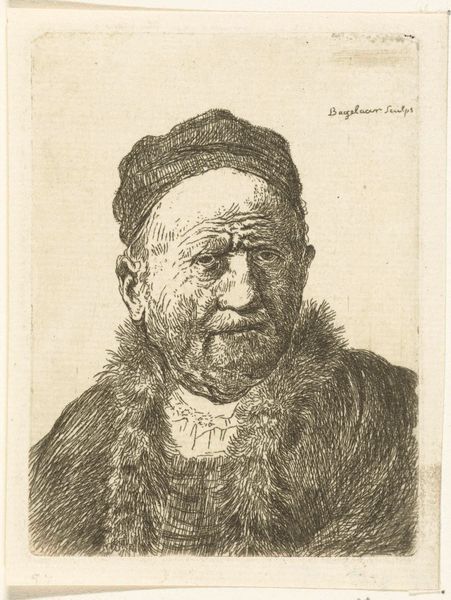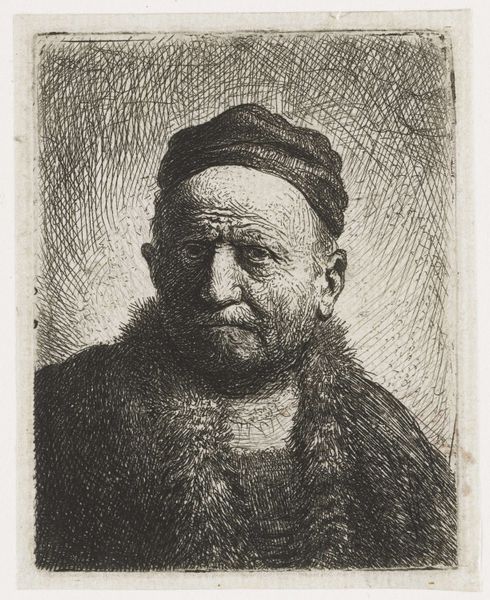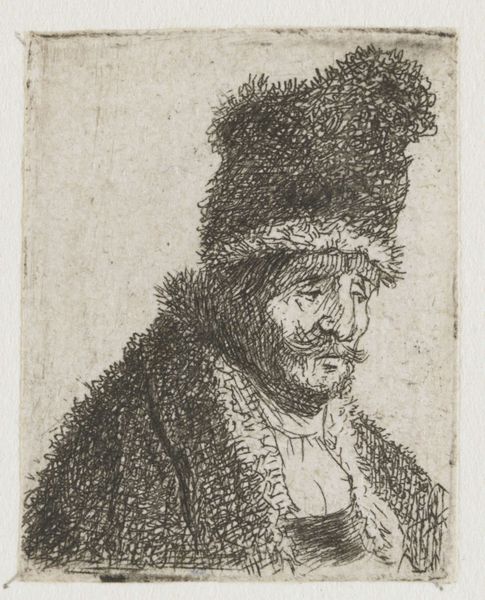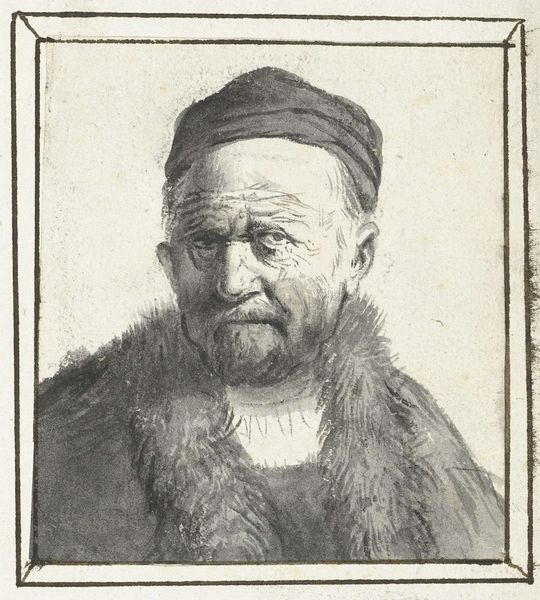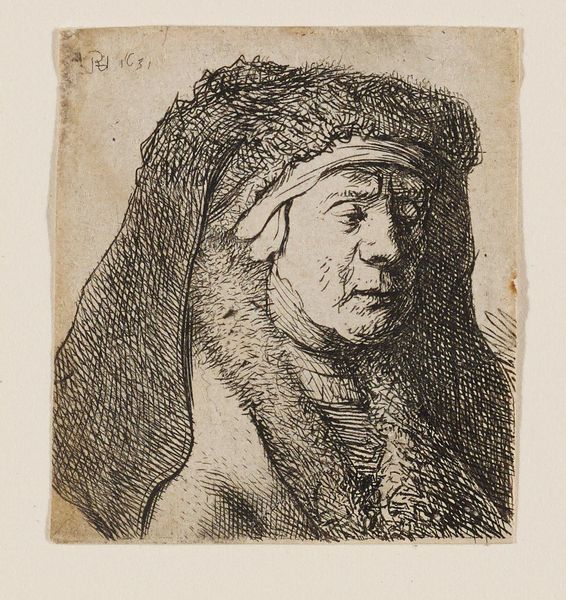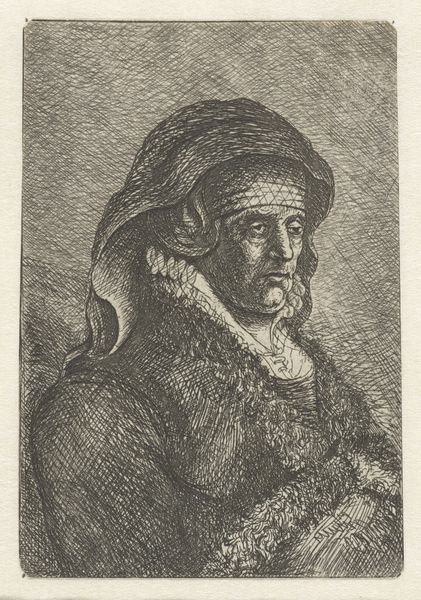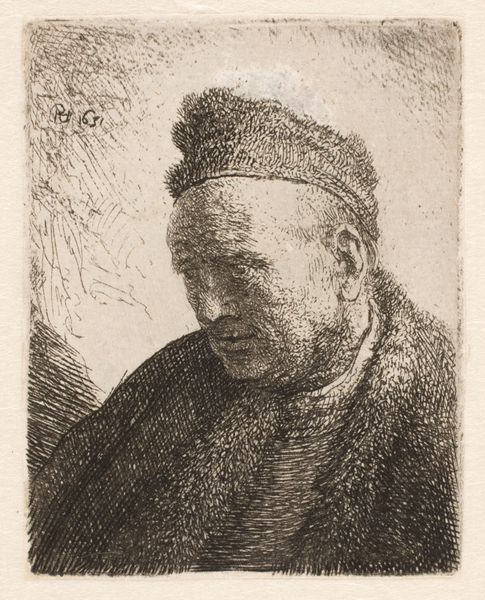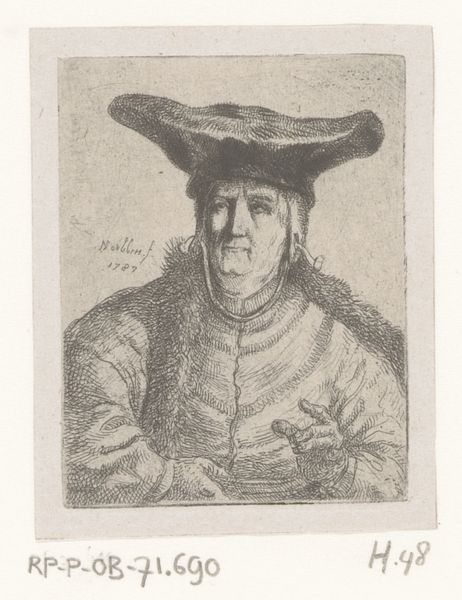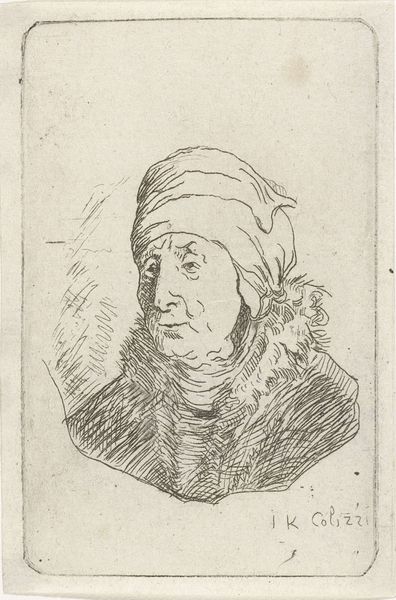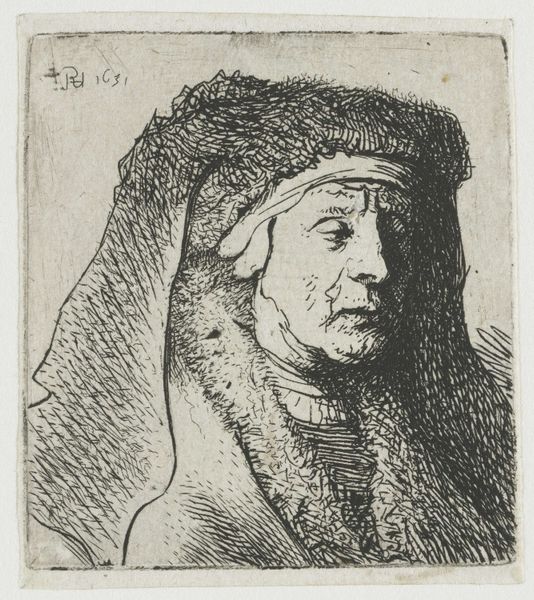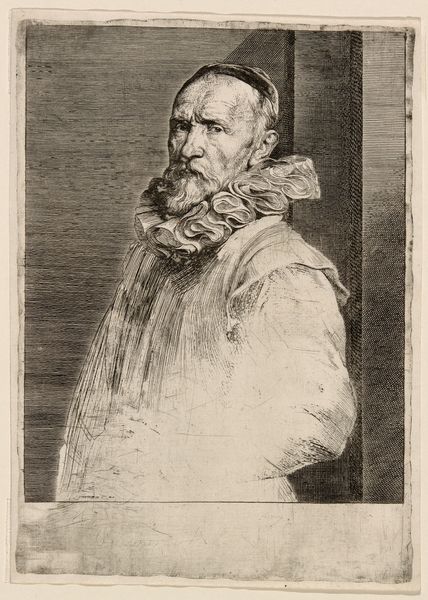
print, etching
#
portrait
# print
#
etching
#
old engraving style
#
portrait drawing
#
northern-renaissance
#
realism
Dimensions: height 75 mm, width 55 mm
Copyright: Rijks Museum: Open Domain
This small etching by Ernst Willem Jan Bagelaar, dating from the late 18th or early 19th century, depicts a man believed to be Rembrandt's father. The image is brought into being via the chemical erosion of a metal plate, a painstaking process involving acid and careful control. Look closely, and you'll see the network of fine lines. The artist would have strategically etched these into the metal, building up tone and texture. Notice how the density of the lines creates the shadows and contours of the man's face and clothing. Etching, like engraving, was a reproductive technology; it allowed images to be disseminated widely and relatively cheaply. This print, in its modest way, speaks to the rise of a visual culture driven by commerce, enabling artists like Bagelaar to circulate their work and ideas, and for collectors to acquire them. Consider the labor involved in the production process, from the preparation of the plate to the printing of each impression. Ultimately, appreciating this etching involves understanding its historical context, and the relationship between artistic skill, material processes, and broader social forces.
Comments
No comments
Be the first to comment and join the conversation on the ultimate creative platform.
